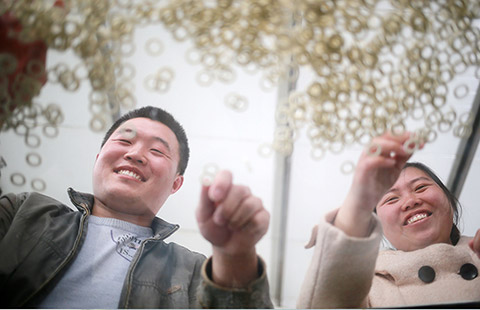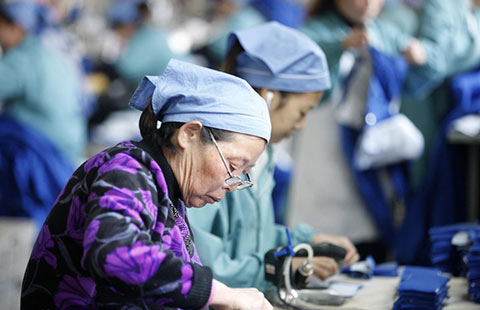Forex reserve rise eases economy fears
(Xinhua) Updated: 2016-04-08 16:54BEIJING - China's foreign exchange reserves rose in March for the first time since November, as fears about a weak yuan and capital outflow eased while the country's economy shows signs of warming.
Foreign exchange reserves increased by $10.26 billion to top $3.21 trillion in March, according to data from the People's Bank of China (PBOC) on Thursday.
The positive change followed five consecutive monthly declines, including a record slump of $108 billion in December and $99.4 billion decline in January.
March's data eased fears of a downward spiral of capital outflows and yuan weakness, said Tom Orlik, chief Asia economist at Bloomberg.
The narrow spread between the offshore and on-shore yuan and between the spot and forward price suggest depreciation expectations have been reduced, Orlik said in a report to clients.
As China's economy showed more positive signals in recent weeks, renminbi depreciation expectations weakened, according to a report from investment bank China International Capital Corporation (CICC).
The RMB appreciated 1.23 percent against the US dollar in March, the largest monthly gain in a year.
The dollar has been weakening in recent weeks following the dovish stance of the US Federal Reserve in March when it signaled a slower pace of interest rate hikes this year.
On the China front, its fiscal and credit policy support has begun to take effect.
PMI data for its manufacturing and non-manufacturing sectors both improved in March. Consumer inflation in February was 2.3 percent, up from January's 1.8 percent.
Home prices are rising again, at least in first-tier cities. China's real estate investment rose 3 percent in the first two months of 2016 year on year, up from an increase of just 1 percent in the whole of 2015.
Aside from the improvement in the general economy, Bloomberg's Orlik also attributed the increase of foreign exchange reserves in March to better communication by policy makers.
"In February and March, central bank governor Zhou Xiaochuan gave a series of interviews, speeches and press conferences, repeating a consistent line against yuan depreciation," Orlik noted.
Poor government-market communication has long been blamed for market fluctuations. For example, the PBOC unexpectedly revamped its foreign exchange mechanism in August, which is believed to have rattled investors and precipitated the yuan's subsequent depreciation.
Although the foreign exchange reserve rose for the first time in five months, analysts said it might not be a turning point for capital outflows.
Capital outflow may return if the dollar strengthens again as the Federal Reserve raises the interest rate later this year, Sinolink Securities analyst Xu Yang said.
CICC is more optimistic and believes the renminbi will be "largely stable over the medium term."
According to its report, "We see limited room for further monetary easing. In particular, the central bank may not need to cut interest rates this year. Given our assessment of a slow Fed hike this year, the interest rate spread between the RMB and the US dollar will not notably narrow, which may ease the pressure on capital outflows."
The consensus forecast is for the yuan to end the year at 6.7 to the US dollar, down from expectations of a 6.8 finish in mid-March, Orlik said.
- China starts to release forex reserves in Special Drawing Rights
- China's forex reserves end falling streak
- IMF chief hails China's clear foreign exchange policy
- Latest forex data good news for policymakers
- Flight of capital eases; currency exchange stable
- Zhou: Forex drop 'natural after explosive growth'
- China's most expensive vacation can be booked April 25
- RMB internationalization a positive thing: former Fed heads
- Shanghai, Shenzhen see fall in housing market after new curbs
- Three Chinese stock exchanges among world's top five
- Momentum for asset-backed securities not strong: Official
- Fighting back: Self-defense classes in Tianjin
- Chinese firms bid to buy NY-listed Dangdang
- Central bank drains money from market

















